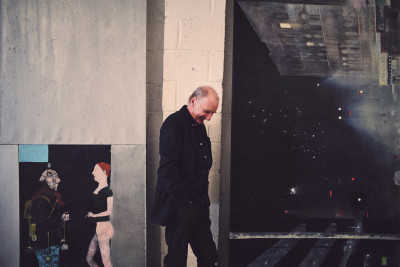10 minutes with… Rebecca Salter RA
10 minutes with… Rebecca Salter RA
By Harriet Baker
Published 27 February 2015
Each month, we have a quick chat with one of our Academicians to find out what they’re up to and what the RA means to them.
-
Rebecca Salter is a painter and printmaker. She studied at Bristol Polytechnic and then at Kyoto City University of the Arts in Japan, where she lived for six years. While living in Kyoto she studied traditional Japanese woodblock printing with Professor Kurosaki Akira and has since written two books on the subject. Her interest in printmaking is combined with her practice in painting and her current project is a thoughtful combination of the two mediums for the Summer Exhibition.
What are you working on at the moment?
I’ve just finished the work for a show at Howard Scott Gallery in New York in April, and at Beardsmore Gallery in London in May, so it has been a busy start to the year.
I’m off to Kyoto in Japan at the end of the month to visit one of the few traditional Japanese woodblock workshops left, Satou Woodblock. I have worked with them before to produce a set of prints for my show at Yale Center for British Art in 2011. I had no hesitation in deciding to commission two new prints for the Summer Exhibition at the RA as a way of introducing their work to an entirely new audience. They love working on contemporary projects as it makes a change from their regular work and I think a British audience familiar with typical Japanese prints will be amazed at their technique.
What is your earliest memory of art?
As a child I lived in the depths of the English countryside, and for some reason I was drawn to the art of China and Japan, and that fascination stays with me to this day.
-

Portrait of Rebecca Salter RA in her studio
-
What work of art do you wish you’d created?
If a pair of screens, Pine Trees, by the Japanese artist Hasegawa Tohaku (1539-1610) ever go missing, they might start the search by raiding a London studio! His name may be unfamiliar to a British audience but for me he is one of the masters of “white space”, or the paradox of expressing himself through empty spaces.
How do you know when a piece of work is finished?
That is one of the hardest questions to answer. All I can say is that the older and more experienced you are, the easier it seems to be. But it remains terribly hard to put into words. On a good day, you just know!
Where were you when you found out that you had been elected as an Academician?
I was in the kitchen cooking supper and getting ready to leave early the next morning for a brief residency in the Lofoten Islands in north Norway. I spent 10 days working with an artist friend who lives there and we went drawing outside in the dark. It was December!
-

Rebecca Salter RA, Quadra, 2011.

Rebecca Salter RA, studio detail
-
What does the Royal Academy mean to you?
It is a tremendous honour to be elected to the RA which, I think, carries with it a responsibility to champion the case for all the arts, especially the visual arts. I think it is incredibly important for artists to be in a position to act as advocates for their chosen profession and defend the role the arts should play in a civilised society.
If you were president of the RA for the day what you would you change?
I think I would be overwhelmed by the responsibility for most of the day but if I was lucky enough to find a sponsor with very deep pockets I would love London to have the equivalent of the Cite Internationals des Arts in Paris. There are over 300 studios with 70% of them ‘owned’ by different countries, which then nominate different artists to spend a residency in Paris. I think it is an interesting model and enables artists from very different parts of the world to meet.






